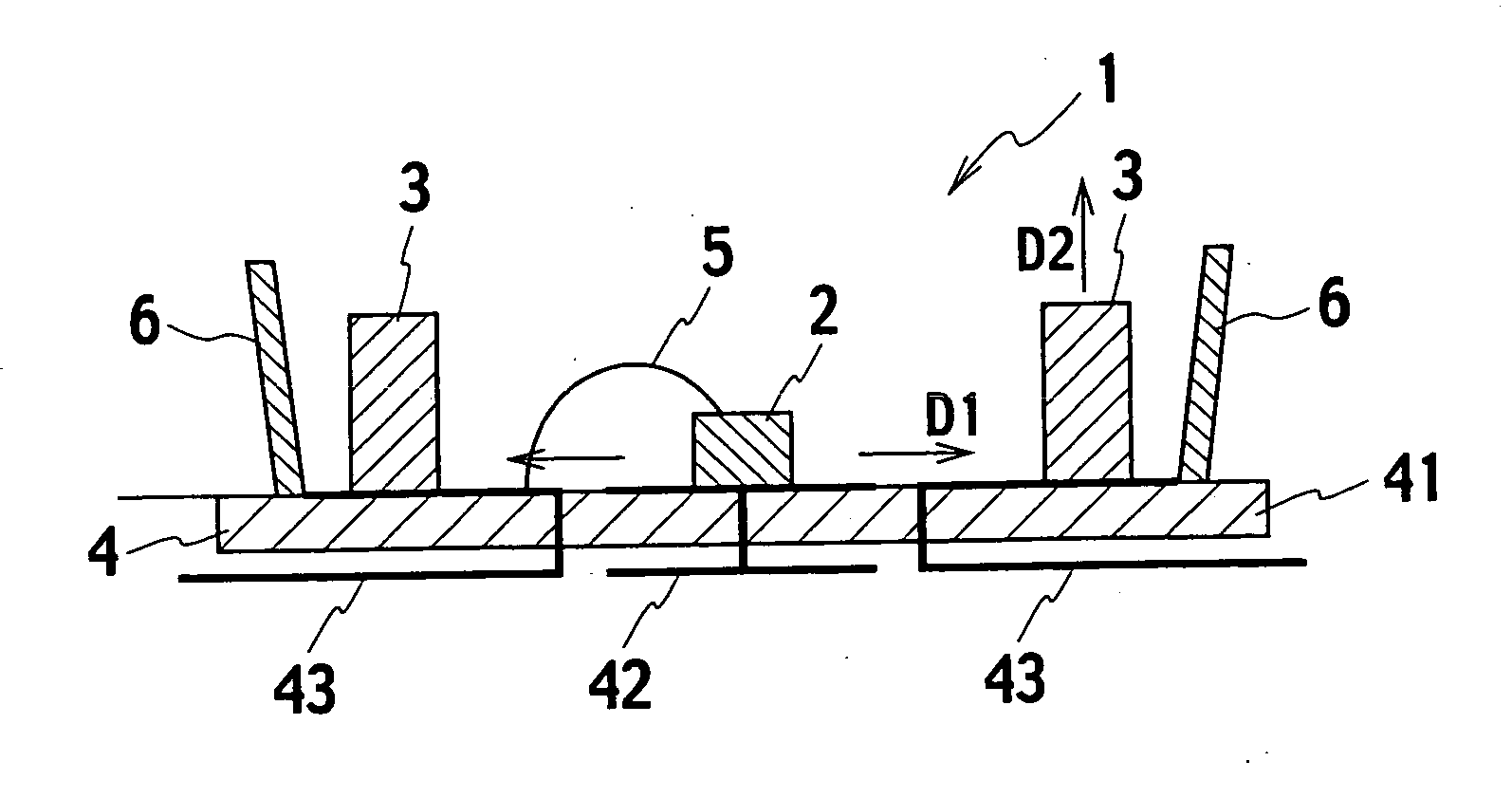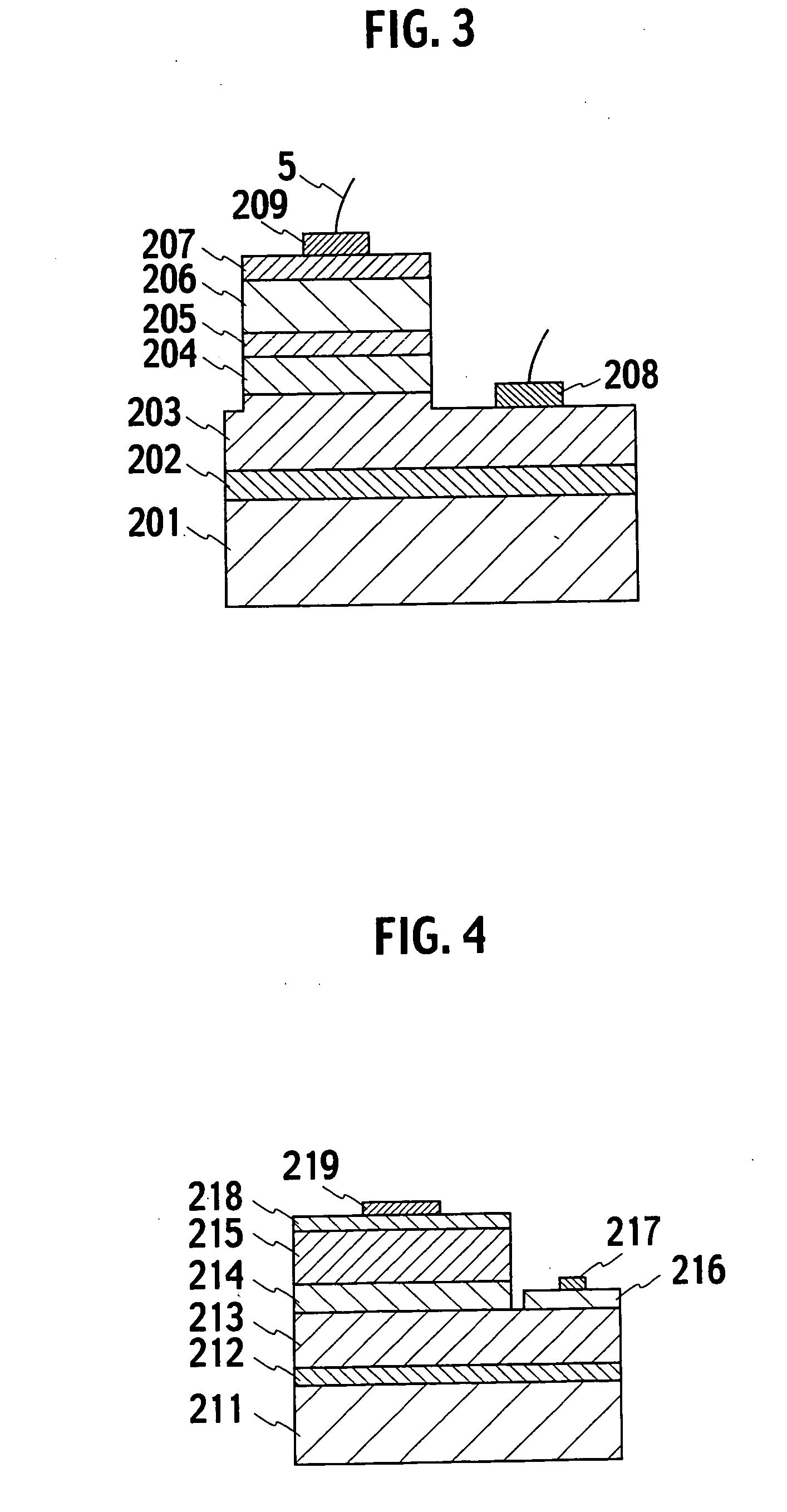Semiconductor light emitting device
a technology of semiconductors and light beams, which is applied in the direction of semiconductor lasers, lasers, lighting and heating apparatus, etc., can solve the problems of inapplicability to lighting systems, the device of reference 1 and 2 is not suitable to use, etc., and achieves the effect of reliable emitted high intensity light beams and high brightness
- Summary
- Abstract
- Description
- Claims
- Application Information
AI Technical Summary
Problems solved by technology
Method used
Image
Examples
second modified example
[0103] Referring to FIG. 10, a fluorescent element 3 has a cross section in the shape of a quarter sector while a fluorescent element 3 in FIG. 11 is in the shape of an inverted trapezoid. Surfaces of the light diffusing areas 3B on the fluorescent elements 3 are enlarged in order to increase an amount of light beams to be diffused. Further, the fluorescent element 3 extends over the reflecting section 46 and covers a light path of the light beams emitted by the light emitting element 2. This is effective in lengthening the light path via which light beams are absorbed, and suppressing leakage of light beams. Further, the fluorescent element 3 is in contact with the reflecting section 46, so that the reflecting section 46 functions as a dam (i.e., a mold). This facilitates making of the fluorescent element 3 by dropping the material using the dispenser.
THIRD MODIFIED EXAMPLE
[0104] In FIG. 12, the fluorescent element 3 has a triangular cross section. In FIG. 13, the fluorescent ele...
fourth modified example
[0105] Referring to FIG. 15 and FIG. 16, fluorescent elements 3 have cross sections in the shape of an inverted trapezoid. A fluorescent element 3 of FIG. 7 has a cross section in the shape of a fan, and a fluorescent element 3 of FIG. 18 has a traiangular cross section. All of these fluorescent elements 3 are designed to have large light diffusing areas 3B, thereby increasing an a mount of light beams to be diffused. Further, a slightly acute angle is formed between the surface of the light diffusing area 3A of the fluorescent element 3 and the surface of the substrate 4. This allows that light beams which are emitted from the light emitting element 2 and are reflected on the fluorescent element 3 are guided toward the surface of the substrate 4. Therefore, it is possible to suppress leakage of light beams reflected on the fluorescent element 3.
first embodiment
Advantages of First Embodiment
[0106] In the semiconductor light emitting device of the first embodiment, high energy excited light beams from the light emitting element 2 are disffused in the first direction D1 which is different from the second direction D2 where light beams from the fluorescent element 3 are received. All of the high energy light beams are absorbed by the fluorescent element 3 which is a wavelength conversion material. This enables the use of all of the high energy exciting light beams from the light emitting element 2, and allows the fluorescent element 3 to diffuse light beams having large outputs and high brightness.
[0107] The semiconductor light emitting device 1 has a simple structure which adjusts the direction of the high energy exciting light beams from the light emitting element 2 and the direction of light beams diffused by the fluorescent element 3. This is effective in reducing the number of components and in promoting downsizing.
PUM
 Login to View More
Login to View More Abstract
Description
Claims
Application Information
 Login to View More
Login to View More - R&D
- Intellectual Property
- Life Sciences
- Materials
- Tech Scout
- Unparalleled Data Quality
- Higher Quality Content
- 60% Fewer Hallucinations
Browse by: Latest US Patents, China's latest patents, Technical Efficacy Thesaurus, Application Domain, Technology Topic, Popular Technical Reports.
© 2025 PatSnap. All rights reserved.Legal|Privacy policy|Modern Slavery Act Transparency Statement|Sitemap|About US| Contact US: help@patsnap.com



